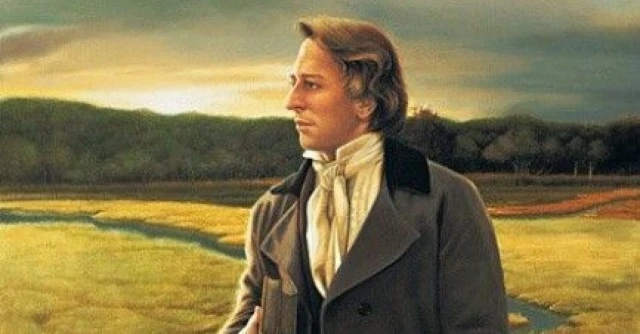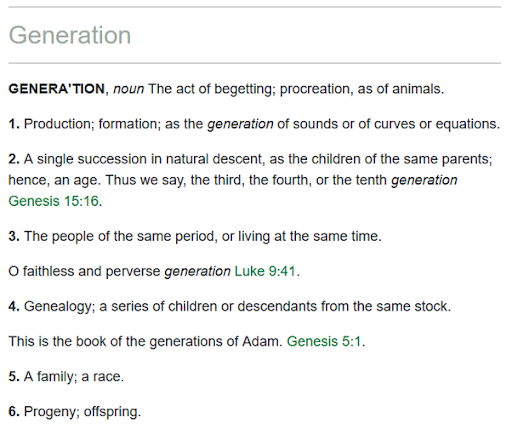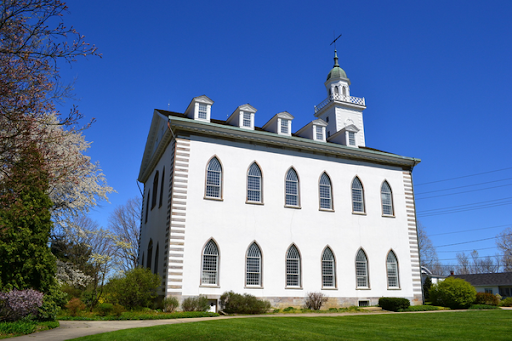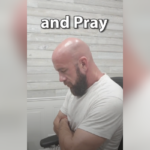
Did Joseph Smith Falsely Prophesy About a Temple in Missouri in His Generation?
Why does the LDS Church still teach that Joseph Smith was a true prophet of God after he made a false prophecy about a temple being built in Missouri in his generation (Doctrine and Covenants 84:1-5)?
Because we know that many words, such as generation, aren’t limited to only one definition.
One valuable but often overlooked resource in understanding Joseph Smith and his environment is Webster’s 1828 dictionary, which provides a snapshot of how Americans understood the English language during the 19th century. Here’s a screengrab from the online version of that dictionary:

If we want to hold generation to only one definition, number 2 is the one that will do the job in discrediting Joseph Smith’s prophecy. Sort of. (More on that below.)
But look at definitions 5 and 6. By the time this revelation was received in 1832, some of the Church’s notable future leaders had joined it (such as Brigham Young and Heber C. Kimball) along with their families, and elements of those families have remained with the Church ever since. There were also times in the 19th century when it was fashionable among bigots to claim that members of The Church of Jesus Christ of Latter-day Saints were a separate race from other Americans; it has always been easier for some to justify their prejudices by claiming the targets of their disdain are of a lesser race.
Another scripture of interest is 1 Peter 2:9–10, which states (emphasis mine),
But ye are a chosen generation, a royal priesthood, an holy nation, a peculiar people; that ye should shew forth the praises of him who hath called you out of darkness into his marvellous light:
Which in time past were not a people, but are now the people of God: which had not obtained mercy, but now have obtained mercy.
Peter was addressing a diverse audience—“the strangers scattered throughout Pontus, Galatia, Cappadocia, Asia, and Bithynia” (1 Peter 1:1)—who certainly were not all of the same race, ethnicity, or age groups. But by becoming followers of Jesus Christ, they had become a “chosen generation” and “the people of God.”
My point here is that as long as the Latter-day Saints retain their identity as followers of Jesus Christ, this generation has not yet passed away!
But let’s look at the verses cited in the question.
A revelation of Jesus Christ unto his servant Joseph Smith, Jun., and six elders, as they united their hearts and lifted their voices on high.
Yea, the word of the Lord concerning his church, established in the last days for the restoration of his people, as he has spoken by the mouth of his prophets, and for the gathering of his saints to stand upon Mount Zion, which shall be the city of New Jerusalem.
Which city shall be built, beginning at the temple lot, which is appointed by the finger of the Lord, in the western boundaries of the State of Missouri, and dedicated by the hand of Joseph Smith, Jun., and others with whom the Lord was well pleased.
Verily this is the word of the Lord, that the city New Jerusalem shall be built by the gathering of the saints, beginning at this place, even the place of the temple, which temple shall be reared in this generation.
For verily this generation shall not all pass away until an house shall be built unto the Lord, and a cloud shall rest upon it, which cloud shall be even the glory of the Lord, which shall fill the house (Doctrine and Covenants 84:1–5).
Again, only a very simplistic and close-minded reading of these verses yields the result our questioner is looking for.
It states that New Jerusalem’s construction will begin at the temple lot, a specific location in western Missouri that had been identified by Joseph through revelation.
But then look at the last two verses quoted. The city of New Jerusalem would be “built by the gathering of the saints, beginning at this place, even the place of the temple, which temple shall be reared in this generation.”
Where did “the gathering of the saints” begin? Kirtland, Ohio.
Where was the “place” Joseph Smith was at when he received this revelation? Kirtland.
Where was the first latter-day temple built?

Kirtland.
Did God’s glory fill the temple? Oh my, yes.
The Kirtland Temple was dedicated on March 27, 1836, less than four years after the revelation in question was received. After the temple was dedicated, people spoke in tongues, reported seeing angels, and experienced other manifestations of divine power.
A week after the dedication, on April 3, Joseph Smith and Oliver Cowdery were together in the temple when Jesus Christ appeared to both of them (remember what the Bible says about witnesses?), followed by visits from Moses, Elias, and Elijah—all conferring the priesthood keys they had held in their dispensations onto Joseph and Oliver.
Interestingly, April 3, 1836, happened to be both Easter Sunday and the First Fruits holy day of Passover that year (the only year that happened in the 19th century), and observant Jews keep a place at their Passover tables for Elijah’s return, as prophesied in the final chapter of Malachi.
So, how did Joseph Smith happen to find the most appropriate date in his lifetime for reporting Elijah’s return to the temple if he wasn’t a prophet? Can you, gentle reader, think of a better explanation that doesn’t depend on mere coincidence?
One can see “this generation” being used the same way in Matthew 24:29–34, and one can see that all of the events Jesus described in those verses have not yet been fulfilled, roughly 2,000 years later. If Joseph Smith made a false prophecy, then by the same standard, Jesus also made a false prophecy.
But if you want to argue like an atheist and ignore the multiple meanings of words, that’s your responsibility. Please don’t be surprised when your refusal to be taken in by Jesus Christ and His prophets results in being left out when Jesus gathers His followers to Himself.



